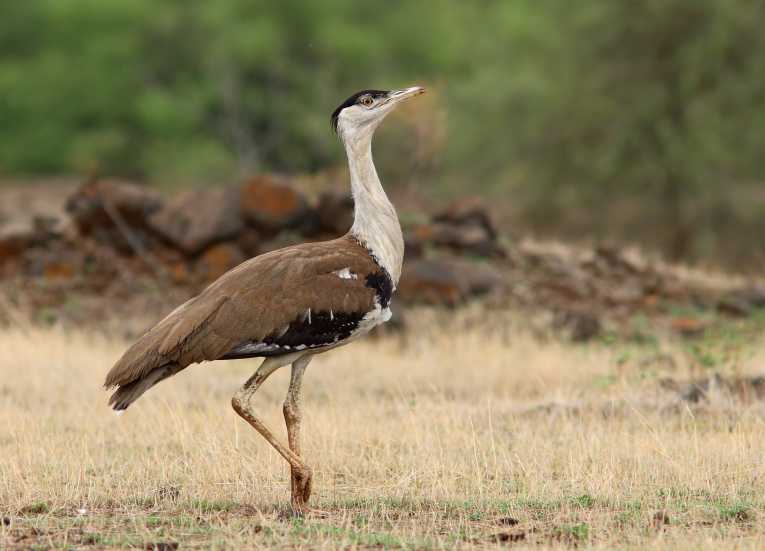As the world becomes more crowded with people, the larger species of birds seem to be losing the fight for space. Birdlife International, a partner of the International Union for Conservation of Nature (IUCN) Red List of Threatened Species, has just released the updates to the list for bird species.
This year's Red List for birds has seen another 13 species of birds added as threatened species. The revision of the threat list for birds means that now an astonishing 13% of the total species of birds in the world are threatened.
The update has also resulted in the threat level for the Great Indian Bustard being upgraded to Critically Endangered, the highest level of threat. BirdLife believes that there may only be around 250 individuals of the Great Indian Bustard remaining.
One of the world's biggest birds, the Great Indian Bustard is nearly a metre tall and weighs almost 15kg. This species used to be found all throughout the grasslands of Pakistan and India, but now remains in small areas. Disturbance and loss of the Great Indian Bustard's habitats, as well as hunting, means this magnificent bird is now in grave danger.
"In an ever more crowded world, species that need lots of space, such as the Great Indian Bustard, are losing out," says BirdLife's Director of Science and Policy, Dr Leon Bennun. "However, we are the ones who lose in the long run, as the services that nature provides us start to disappear".
Another species added to the Red List this year is the Bahama Oriole, a large black and yellow Caribbean bird, which is now listed as Critically Endangered. Some of the recent research puts the population of this bird species at less than 200 individuals.
It is not all bad news and there are several bird species where their fortunes have been turned around and their threat status downgraded as a direct result of intense conservation programmes, including the Campbell Island Teal in New Zealand and three species of Atlantic island pigeon
According to Dr Stuart Butchart, BirdLife's Global Research and Indicators Co-ordinator, birds provide plenty of insight into the state of the rest of nature: "They are very useful indicators of ecosystem health: if they are faring badly, then so is wildlife more generally". The changes documented this year by BirdLife show that overall the world's birds are not doing so well, and so it would seem this not good news for the rest of nature.
Top Image Credit: © Vinod Bartakke










